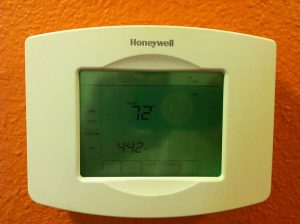What’s the Difference between Auxiliary Heat & Emergency Heat?
If you have a Heat Pump System, you may have noticed that you have both of these options on your thermostat, but there can be a painfully expensive lesson in the difference between these heating systems, so let’s take a moment and save you some unnecessary expenses!
What Is Auxiliary Heat?
The Auxiliary heat gets automatically turned on by your HVAC system to supplement the heat pump output when your system can’t keep up. This happens sometimes when it’s colder than average and on the verge of extreme temperature drop like Nashville experienced this last spring.

Auxiliary heat can also sometimes activate itself when you manually raise the thermostat setting more than two degrees higher than the current room temperature. But don’t worry, it will automatically cut itself off once it hits the target temperature. Essentially your Auxiliary heat is called in as reinforcements for your heater when it is being overwhelmed until things return to a manageable state.
What Is Emergency Heat?
This system is activated manually by a button/switch on your Thermostat. You only use this when your compressor fails or there are extreme weather conditions and your system isn’t heating your home effectively. Be mindful that when you turn emergency heat on, it uses a lot more energy than your normal heating system and you will definitely see that reflected on your power bill!
Don’t Rely On Emergency Heat
If you are having to use Emergency Heat, you should call an HVAC company, like ours, right away. You need to get your HVAC system back running properly to save you from excessive charges on your power bill. Keep in mind, the sooner you call someone the lower your chances of extreme increases caused by running that emergency heat for extended periods of time.
